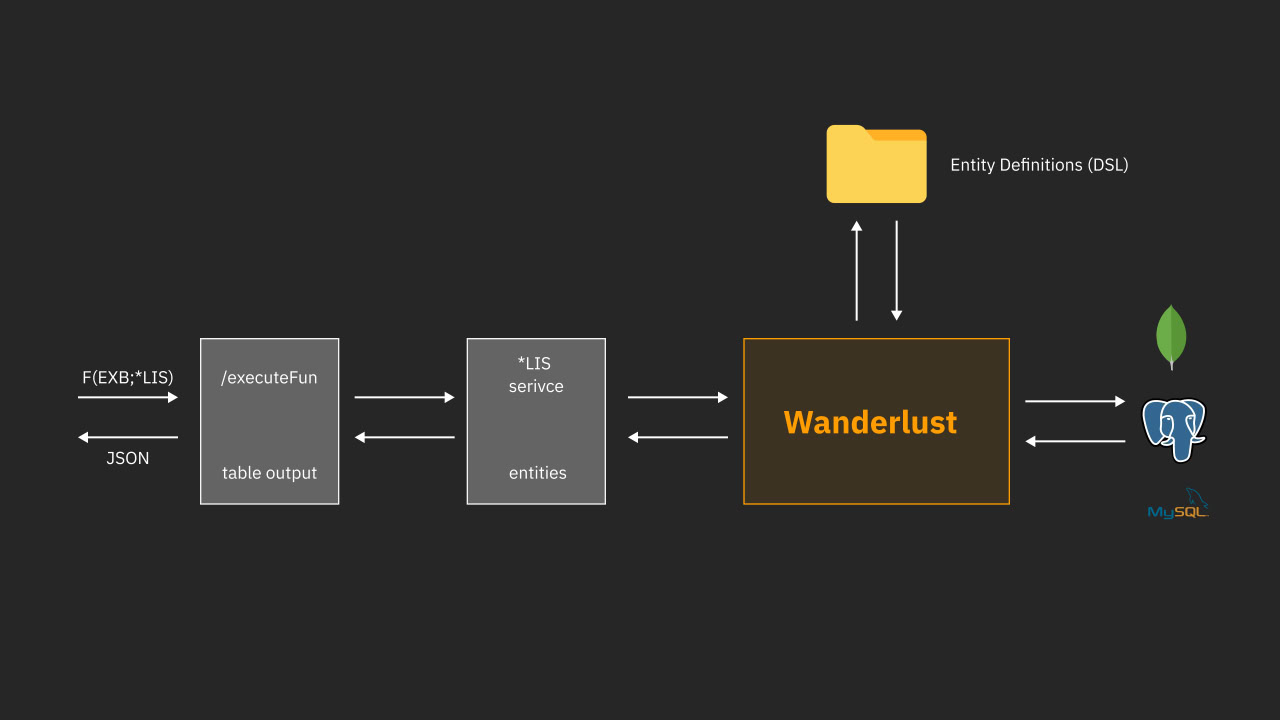Overview
Entity Management (Wanderlust) is an out-of-the-box functionality which allows creation of business entities and relationships between them (exploration, CRUD operations, etc). The main goal is to enhance a system with the power of business entities where they do not exist.
You can define different entities that are physically located in external databases, webservices and Java programs. For example, you can create the object "Customers" whose information are recorded on Postgres, and the object "Item", defined on MongoDB. By mapping these two objects with Wanderlust, you give your system the chance to recognize them as business entities and customize entities navigation.
When Data receives a request (for example, a list of employees) it uses Wanderlust, who reads DSL Java scripts to understand where information (such as names, descriptions) concerning the entity of the request is recorded (webservice, database, Java program). If employees information is recorded on MongoDB, Wanderlust retrieves the raw information on MongoDB and gives it to Data as a new structured data. Finally, Data passes data to the client as a smeup table, and the user sees the list.
Entity definition file is a standalone Java class (.java) and it is located into ENTITIES folder in a DSL library.
